Types of locks on chains
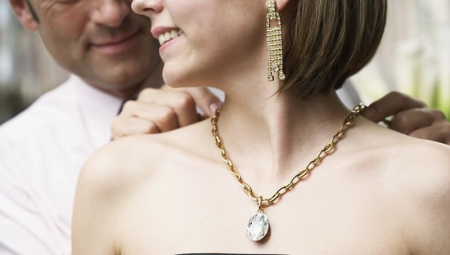
Chains play a huge role. The jewel must be securely fastened, while the connecting element must be in harmony with the main part of the product. There are different types of clasps, each of which is designed so that the jewelry does not get lost and pleases the eye of its owner.

Karabinchik
One of the most common types of fasteners. Its design is simple and reliable. It will not allow the connecting ring to fall out spontaneously. Chains around the neck are often very difficult to fasten on your own.
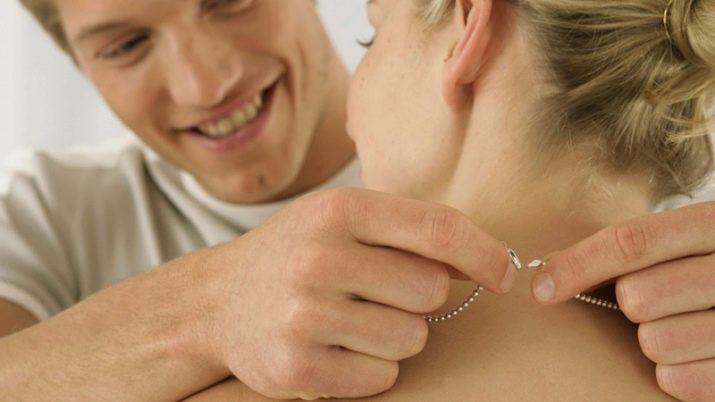
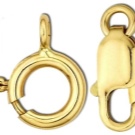
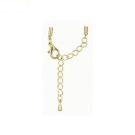

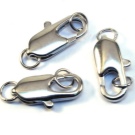
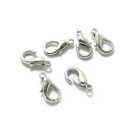
However, a product with a carabiner can be easily put on without the help of strangers. The clasp lever is easy to pick up and hold with your fingernail. Plus, it's easy to fix.
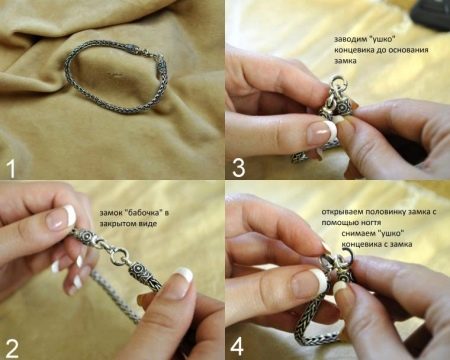
The carabiner has different shapes: in the form of a drop or a rectangle. The first is called a crab or lobster, and the second is called a parrot. In terms of technical characteristics, they do not differ. The appearance of the carabiner depends on the design of the jewelry.
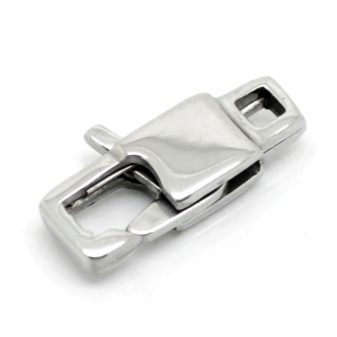
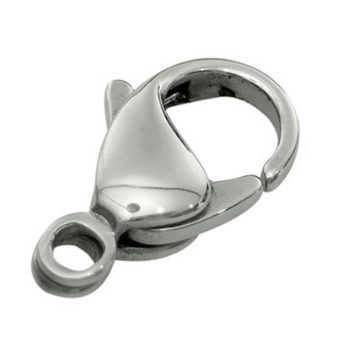
The disadvantage of this type of attachment is its massiveness. It is not suitable for thin airy weaves.
Spring fastener
No less common than the carbine. However, a thin ring is better for fine jewelry. This type of lock has more disadvantages than advantages. It is quite difficult to fasten it on your own, and in case of wear of the mechanism, you will have to completely replace the element.

Another disadvantage of the spring fastener is the weak spring, which plays a major role in the mechanism. It wears out quickly. And the most unpleasant thing is that the wear of the spring occurs imperceptibly. Jewelry with such a lock falls off unexpectedly and imperceptibly.
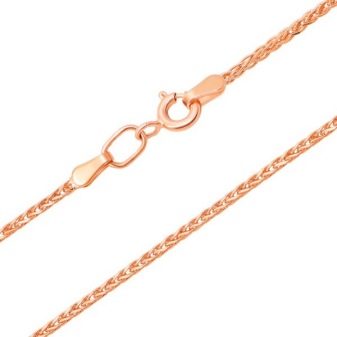
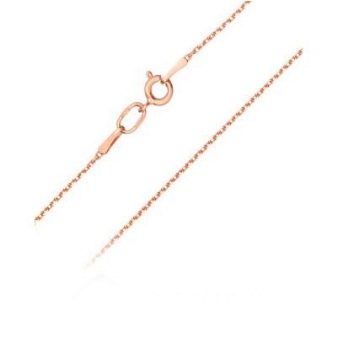
Eight
The lock is very simple in its design. But at the same time, it is not reliable enough.This is a thin wire bent into a figure eight. The product itself is threaded to one end, and a ring for fastening to the other. If the wire is not tight enough, then the jewelry can easily slip out of such an attachment.
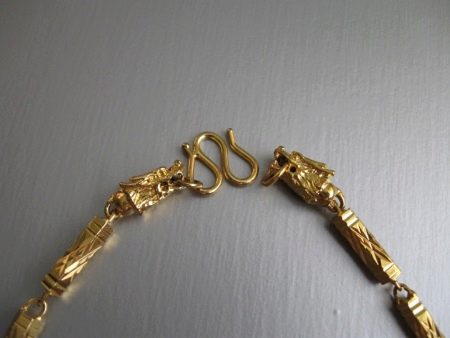
Due to its shortcomings and uncomplicated appearance, it is used for inexpensive jewelry. Craftsmen do not undertake the repair of such a lock, since it will be easier and more reliable to replace it with a new one.
Chain lock
One of the varieties of the box. This is a more simplified version and is used for thin chains. The main part of the element resembles a tube into which a barbed hook is inserted in the same way.

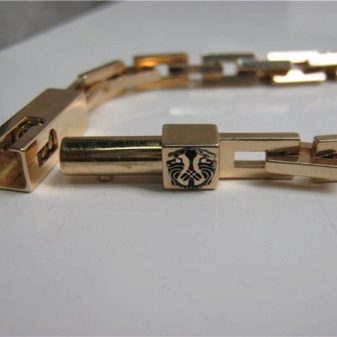
Butterfly clasp
The castle is quite complex in its design. At the same time, in terms of its reliability, it is out of competition. It is mainly used in watches, less often in bracelets. It is supplemented by various mechanisms that make it impossible for the spontaneous disclosure of the structure. Despite the fact that this is one of the largest types of locks, it is practically invisible in the buttoned state.
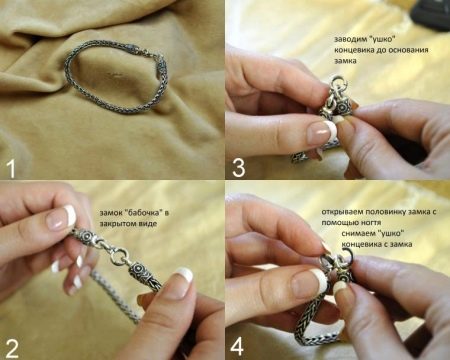
Screw lock
It is mainly used for necklaces. At both ends of the product, the component parts of the fastener are attached, which are screwed together. The thread on such a screw is very thin and delicate. Therefore, the service life of such a fastener is extremely short.

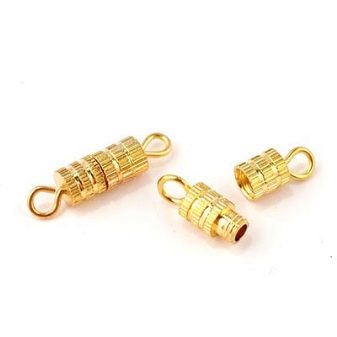
Crutch
An elementary design, which is very reliable at the same time. A horizontal stick is threaded into the ring on the jewelry, which is attached to the opposite side of the product. Spontaneous slipping of the stick is practically excluded.

It looks simple but stylish. Often, such a clasp on bracelets acts as a decorative element.
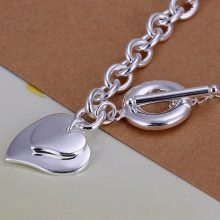
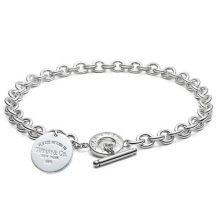
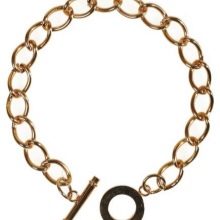
Box
One of the most reliable types of locks. With its help, parts of massive and expensive products are connected.


At one end of the chain, the decorative part of the lock in the form of a box is fixed. On the opposite side of the product there is a hook that is inserted into the box and fixed with the notches on it.
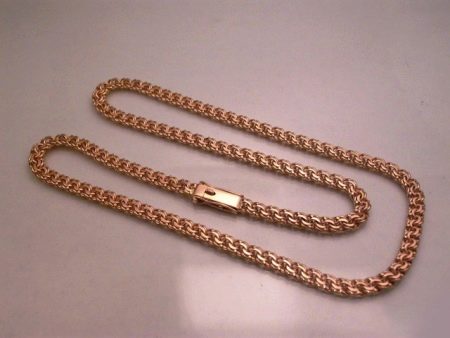
There are other varieties of the box lock. They differ in the shape of the hook and the main part. An even more reliable lock is a similar fastener, only with double-sided latches.
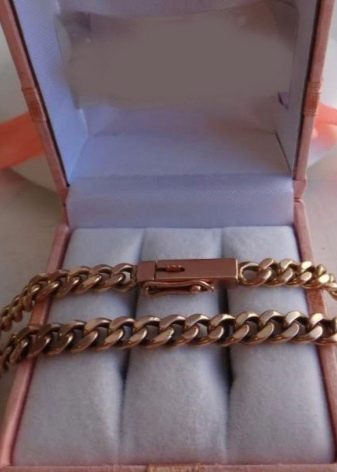
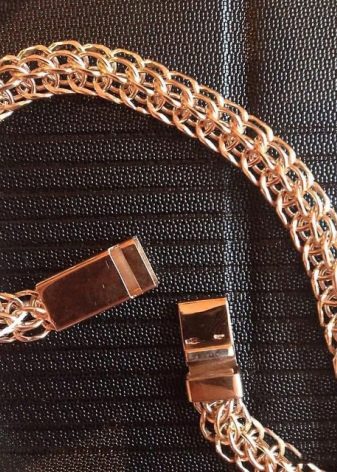
A product with such a lock will cost a little more, since it significantly increases the weight of the jewelry. However, you can be sure that a necklace with such a clasp will be securely fixed.








